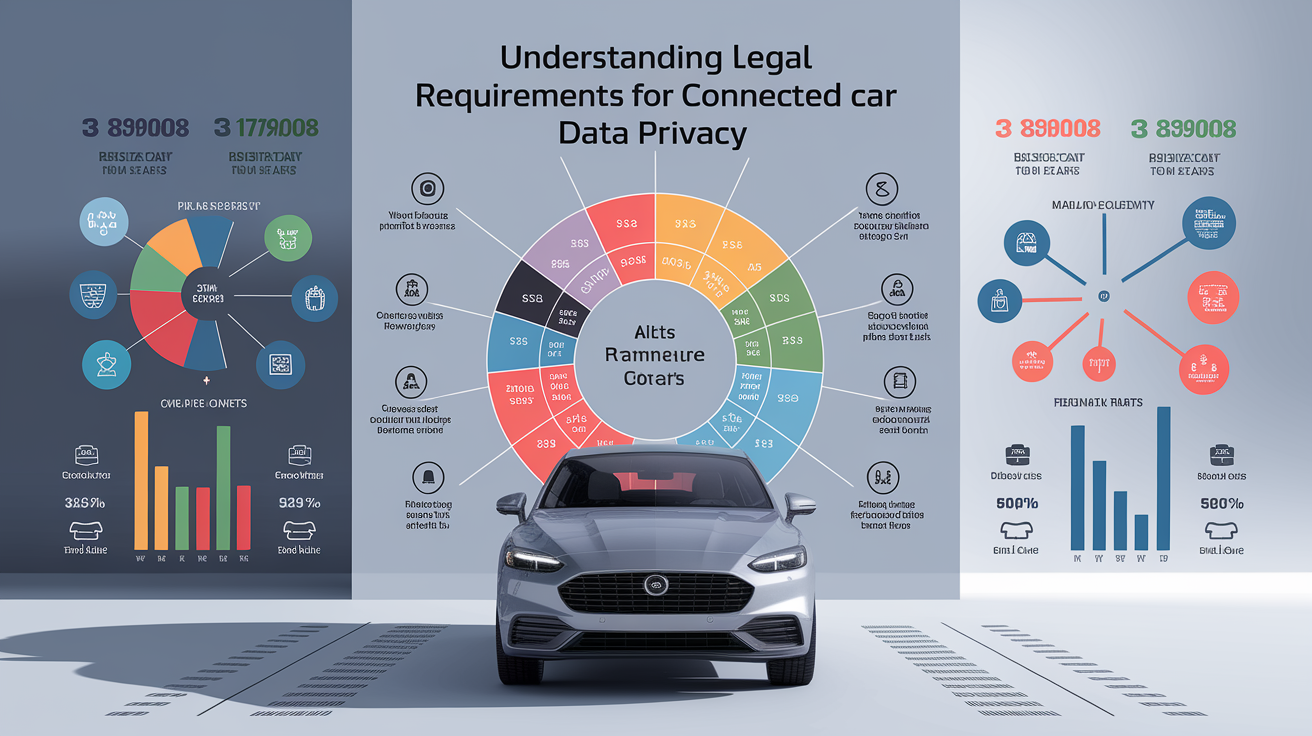Understanding Legal Requirements for Connected Car Data Privacy
Rules come first. In the world of connected cars, understanding the law is not optional—it’s your essential climbing gear. Without it, you’re at the base of a sheer cliff, staring at complex legislation that can feel impossibly high.
Connected cars collect deeply personal information—biometric identifiers, precise GPS routes, even subtle driving patterns. This is not abstract data; it’s a detailed diary of human behavior. Governments worldwide recognize its sensitivity, which is why laws like the EU’s GDPR and the UK Data Protection Act demand strict compliance.

In the United States, the Federal Trade Commission (FTC) enforces prohibitions against deceptive or unfair data collection. Additionally, the U.S. Department of Commerce Connected Vehicles Final Rule, effective March 2025, addresses national security concerns, restricting certain foreign-sourced vehicle technologies.
Key obligations you must meet include:
- Lawful data collection: Gathering only what is necessary and permissible under relevant regulations.
- User consent: Securing explicit permission before processing sensitive data such as location or biometric identifiers.
- Transparency: Clearly disclosing how data is collected, stored, shared, and for how long.
- Security safeguards: Implementing measures that align with global standards for automotive cybersecurity.
Implementing Technical Data Protection Measures
Technology is your shield. Without robust safeguards, personal vehicle data is wide open to theft or misuse—a bit like leaving the garage door unlocked in a busy city.

To build resilience against automotive cybersecurity threats, automakers and suppliers should integrate “privacy by design” and adopt strong protective processes:
- Data minimization: Limit collection to what is strictly necessary for service functionality.
- Encryption: Use secure, contemporary standards for both data in transit and at rest.
- Regular audits: Engage in connected vehicle audit requirements to detect vulnerabilities early.
- Anonymization: Apply techniques that remove identifiable markers, reducing risk if data is exposed.
Remember, connected vehicles often gather information from internal telematics and external devices like smartphones. This doubling of sources means your defense strategy must be layered and comprehensive.
Establishing Privacy Policies and User Consent
Trust is built. And in the connected car ecosystem, trust rests on transparency and the driver’s right to choose.
Consent, legally speaking, is more than a signature or a checkbox—it’s an informed choice. Regulations and watchdogs such as the French CNIL stress the dominance of the driver’s consent in processing sensitive data like precise location tracking.

Effective privacy policies should:
- Be written in clear, straightforward language—avoiding dense legalese.
- Explain precisely what data is being collected and for what purpose.
- Address non-primary drivers and passengers, outlining their rights and data collection opt-outs.
- Specify retention periods and data deletion protocols.
By implementing active driver consent management and maintaining updated OEM data policies, you safeguard not just privacy rights but also your company’s legal standing.
Managing Vendors and Third-Party Compliance
Your network matters. In connected car manufacturing, your privacy program is only as strong as its weakest vendor.
Third-party data sharing and supply chain integrity form a crucial part of compliance. The Connected Vehicles Final Rule makes it clear: importing or using certain foreign-sourced components can violate both privacy and national security laws (read the compliance impact analysis).
Practical steps include:
- Conducting thorough due diligence on all vendors handling vehicle telematics data.
- Implementing data sharing agreements that establish clear privacy standards and breach protocols.
- Evaluating components for compliance with country-specific restrictions on connected vehicle imports.
- Scheduling periodic supply chain audits to ensure ongoing compliance.
When your vendors follow the same strong automotive privacy frameworks you do, the entire chain—from manufacturing to end-user experience—remains secure.
Benefits of a Robust Connected Car Data Privacy Program
The payoff is real. A strong, well-structured automotive data privacy program isn’t just about avoiding fines—it’s about building loyalty, credibility, and resilience.
Benefits include:
- Risk reduction: Lower chances of costly legal actions and reputational damage from breaches.
- Customer trust: Demonstrating respect for data ownership rights increases consumer confidence.
- Regulatory alignment: Smooth, proactive compliance with evolving GDPR, CCPA, and national security regulations.
- Innovation security: Safeguarding data enables safe exploration of advanced IoT vehicle privacy features.
In an era where connected cars resemble smartphones on wheels but with richer datasets (FTC perspective), protecting automotive data is both a legal necessity and a strategic advantage. With strong governance, you can climb the mountain of compliance—and enjoy the view safely from the top.







